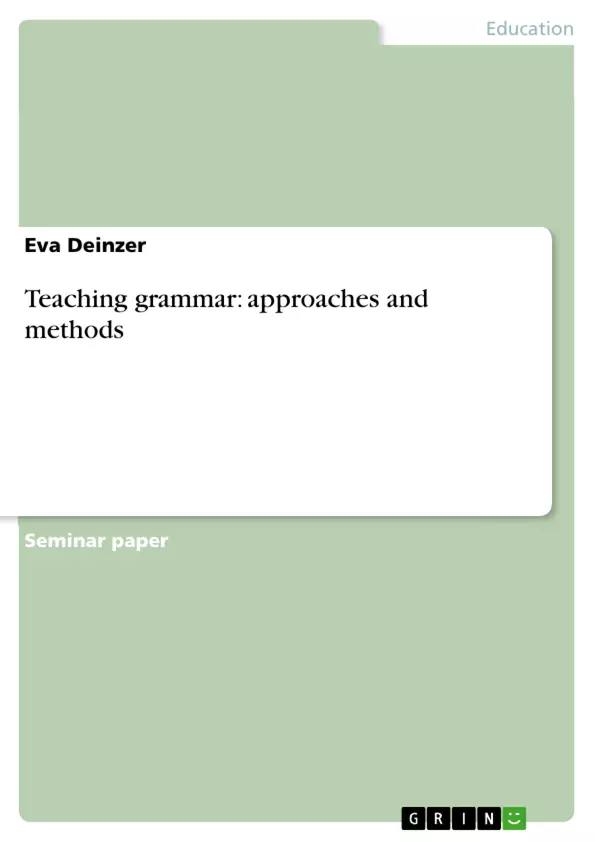This text begins with the important question if grammar teaching is actually necessary. After describing some approaches and methods in more detail and presenting briefly other important aspects in this regard, the author will demonstrate her own model of grammar teaching. The author's intention is to give a short overview over important issues concerning grammar teaching.
Table of Contents
- Introduction
- Is explicit grammar teaching really necessary?
- Contrasting different approaches and methods
- Grammar-Translation Method
- Natural Approach
- Consciousness-Raising
- Other important aspects of grammar teaching
- Deductive or inductive?
- Error correction in speech
- Constructing a model
- Conclusion
- Bibliography
Objectives and Key Themes
This paper aims to provide an overview of important issues concerning grammar teaching in foreign language education. It begins by exploring the necessity of explicit grammar instruction, examining contrasting viewpoints on the subject. The paper then delves into various approaches and methods of grammar teaching, outlining their strengths and weaknesses. Finally, it presents a model for grammar teaching, drawing upon the key insights from the previous discussion.
- The role and necessity of explicit grammar teaching in language acquisition
- Comparison of different approaches and methods to grammar instruction
- The importance of various aspects of grammar teaching, such as deductive vs. inductive approaches and error correction
- The development of a model for grammar teaching
- The tension between implicit acquisition and explicit instruction in language learning
Chapter Summaries
The introduction highlights the common student aversion to grammar and the ongoing search for effective and engaging grammar teaching methods. It outlines the paper's structure, focusing on the necessity of grammar teaching and exploring various approaches before presenting a model for grammar instruction.
Chapter 2 delves into the debate surrounding the necessity of explicit grammar teaching. It distinguishes between language acquisition and language learning, explaining Krashen's "zero-option" approach, which prioritizes language acquisition through natural communication over explicit grammar instruction. Krashen's five hypotheses, including the Input Hypothesis, are presented, emphasizing the role of comprehensible input in language acquisition. The chapter contrasts Krashen's views with those of Rod Ellis, who argues that communication alone is insufficient for full grammatical competence, highlighting the need for form-focused instruction to achieve higher levels of grammatical proficiency.
Keywords
The core concepts and terms explored in this paper include grammar teaching, language acquisition, language learning, explicit instruction, implicit learning, communicative language teaching, the Natural Approach, Consciousness-Raising, deductive vs. inductive grammar instruction, error correction, and model construction. These keywords represent the central focus of the paper, which aims to provide a comprehensive overview of the challenges and possibilities involved in teaching grammar effectively.
- Citation du texte
- Eva Deinzer (Auteur), 2007, Teaching grammar: approaches and methods, Munich, GRIN Verlag, https://www.grin.com/document/81054



